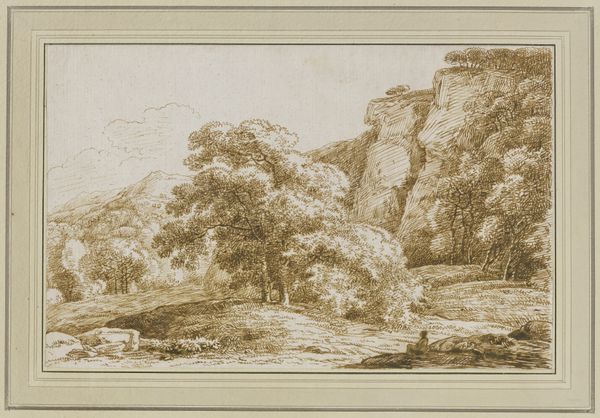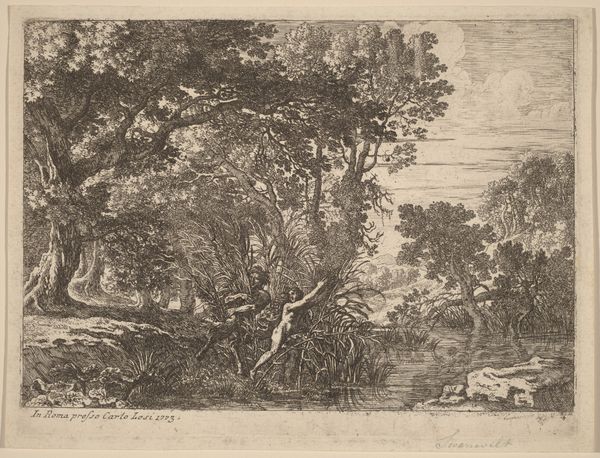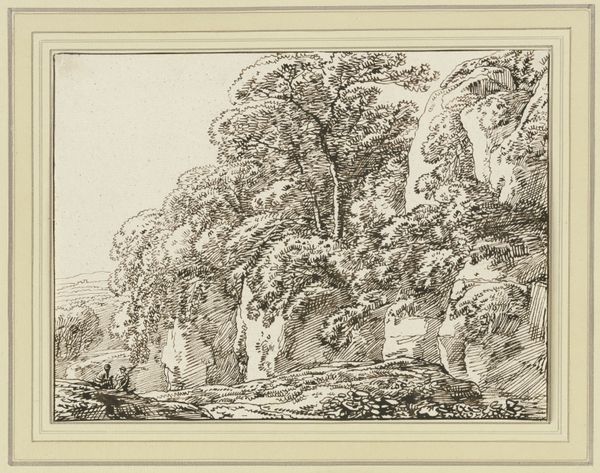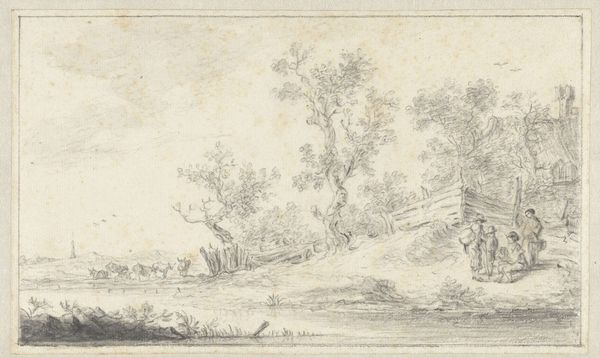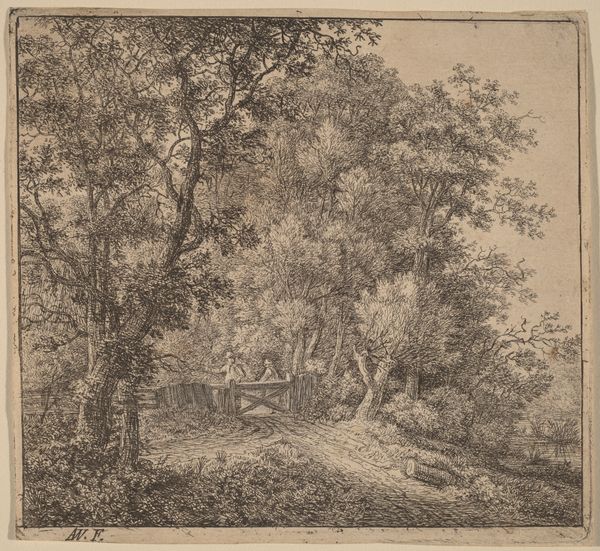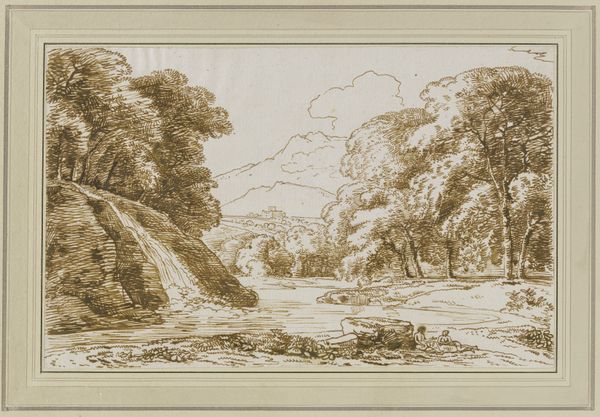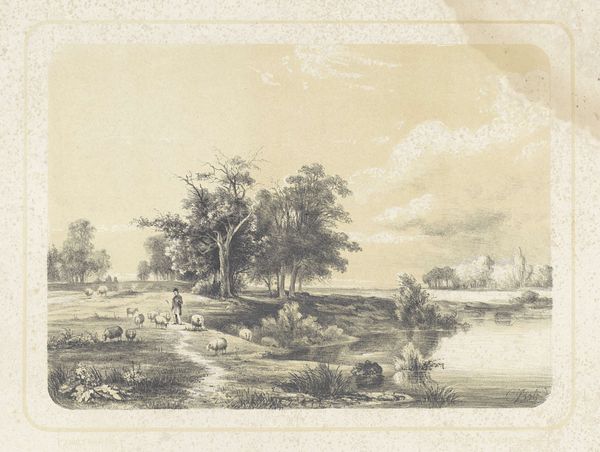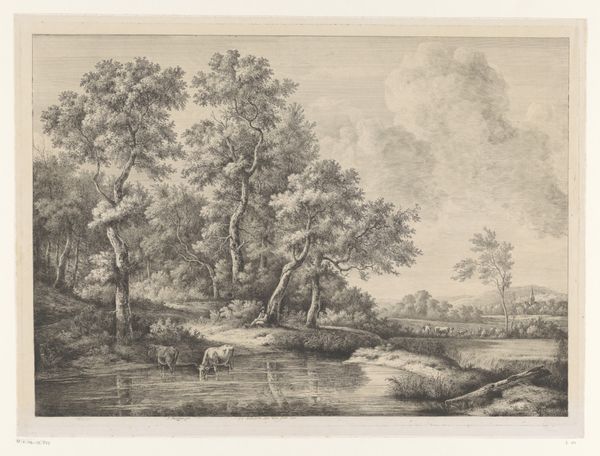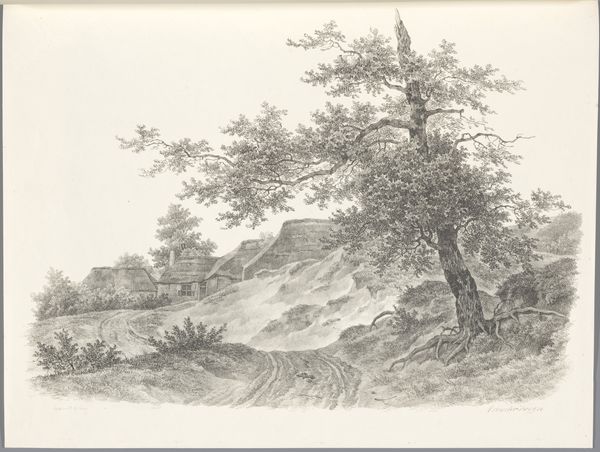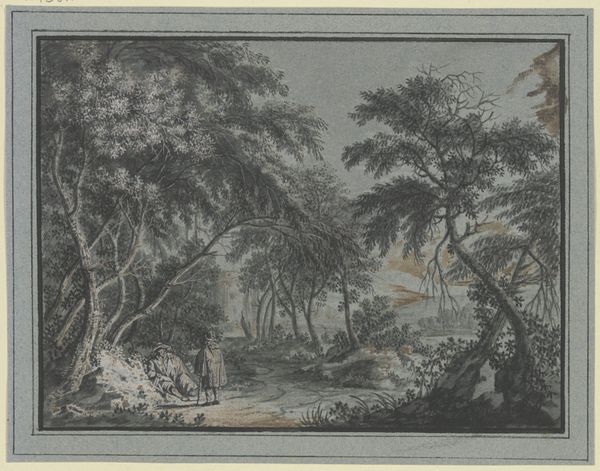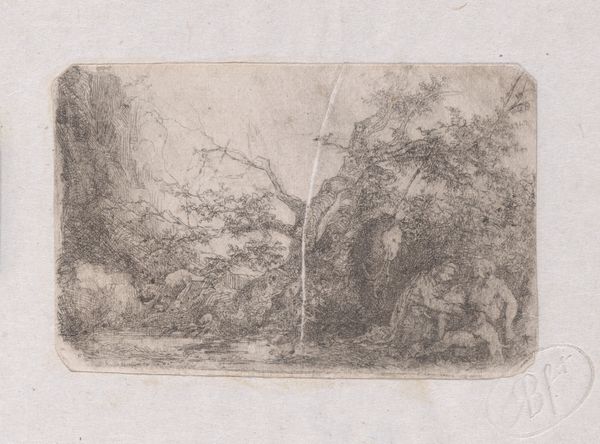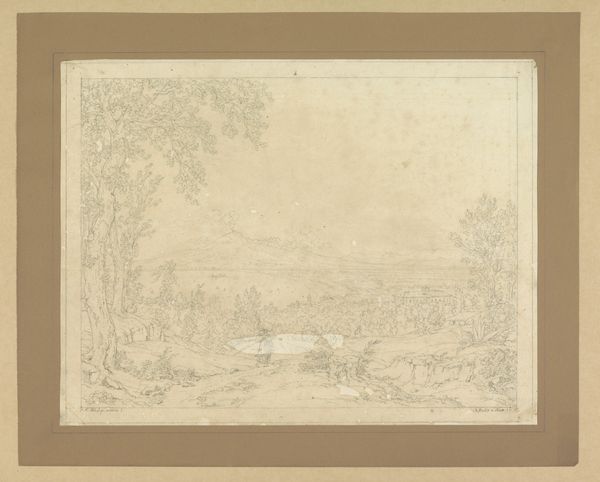
drawing, etching, ink
#
drawing
#
etching
#
landscape
#
etching
#
ink
#
romanticism
Copyright: Public Domain
Editor: This drawing, "Uferlandschaft mit zwei ruhenden Wanderern," attributed to Franz Kobell, uses ink and etching to depict a landscape. It feels so tranquil. Two figures rest by the water's edge, completely dwarfed by the surrounding nature. What strikes you most about this piece? Curator: It’s tempting to see this as simply a serene landscape, but I think we have to consider its historical moment. Romanticism was emerging alongside rapid industrialization and profound social upheaval. How might this seemingly innocent landscape actually represent a critique of those developments? Editor: A critique? How so? Curator: Well, consider the figures themselves. They’re “ruhende Wanderer”—resting wanderers. What kind of freedom, what kind of social class, affords the leisure to wander and rest in nature? And conversely, who *doesn’t* have that access? Are they truly at peace or perhaps displaced, refugees of societal shifts? Editor: I never thought about it that way! I suppose I always romanticized the wandering figure. Curator: That's the point. Romanticism, while beautiful, often masked deeper inequalities. These landscapes could be a powerful reminder of what was being lost – or what was never equally accessible to begin with – in the pursuit of "progress." Does thinking about it this way shift how you interpret the landscape itself? Editor: Absolutely. It's no longer just a pretty picture, but a commentary on social divisions and access. It is more complicated, now, and compelling. Thanks for showing me how much history can inform our reading of an image. Curator: My pleasure. Always question the surface; that is where the richest meanings reside.
Comments
No comments
Be the first to comment and join the conversation on the ultimate creative platform.
